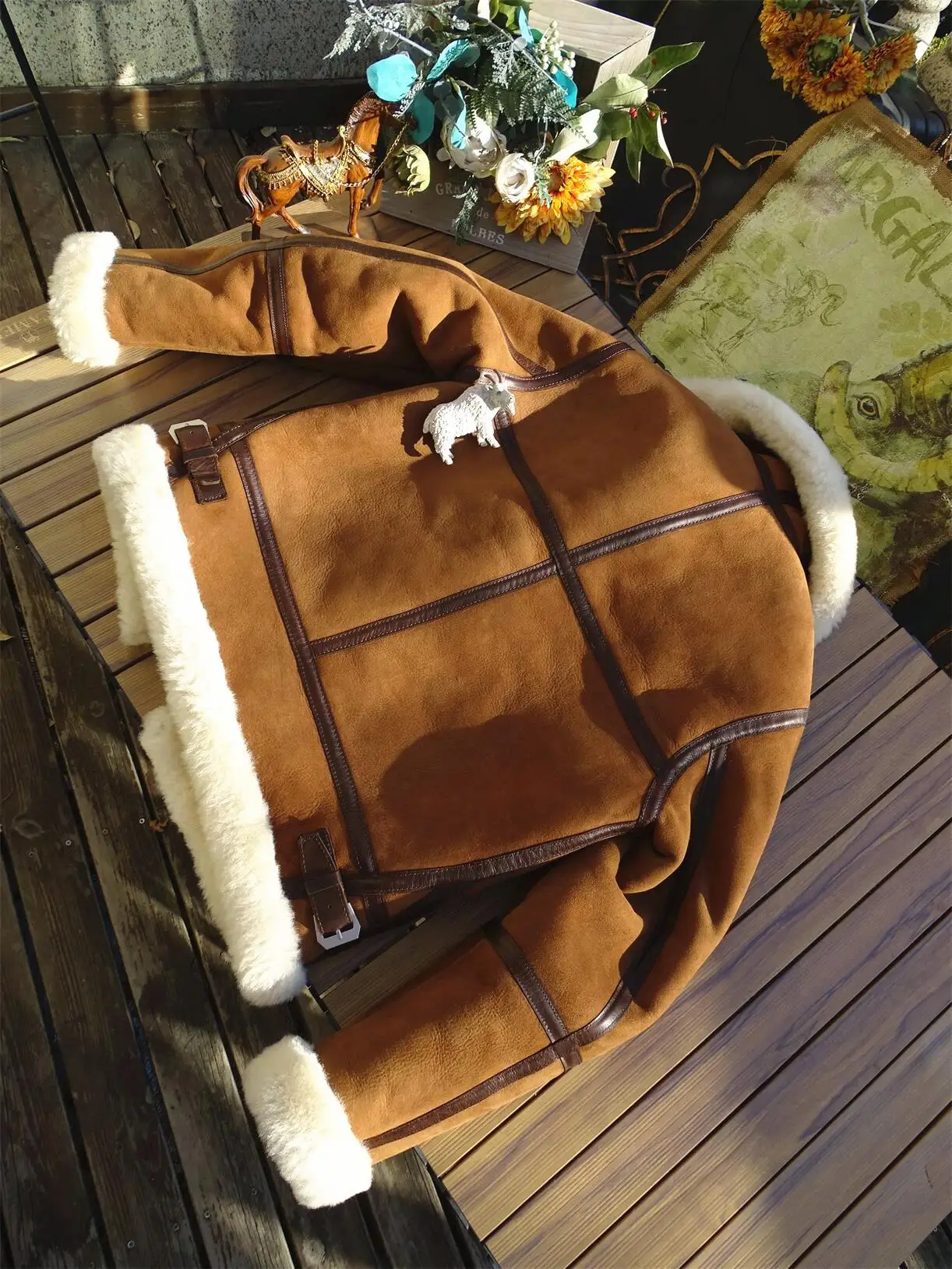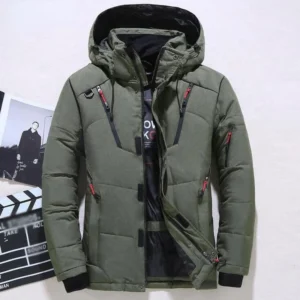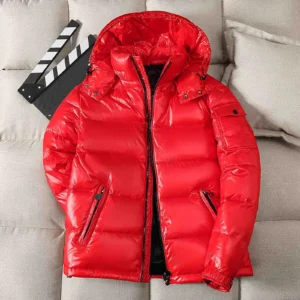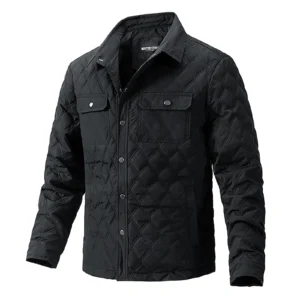What Are Sheepskin and Shearling? Key Differences Explained
When shopping for winter outerwear, the terms “sheepskin” and “shearling” often appear interchangeably, leading to confusion. However, these materials have distinct differences that directly affect their performance in cold weather.
Sheepskin is the broader category, referring to the hide of a sheep that has been tanned and processed. It can be prepared with or without the wool still attached. When the wool has been removed, you’re left with just the leather component, which still offers excellent insulation but lacks the additional warming properties of the wool.
Shearling, by contrast, is a specific type of sheepskin that comes from younger sheep (lambs) and is processed with the wool still attached to the hide. This creates a material with two distinct sides: a suede or leather exterior and a soft, insulating wool interior. The wool is typically trimmed to an even length during processing.
The key structural difference lies in this integrated wool-leather bond. In true shearling, the wool grows naturally from the hide rather than being sewn on after processing, creating a seamless, durable material. This natural connection between wool and leather is what gives shearling its superior insulating properties.
Many products marketed as “sheepskin” actually contain the wool component and might technically be shearling. The comprehensive guide about shearling vs sheepskin shows that understanding these key differences between these materials helps you make a more informed choice for cold weather gear.
Which Provides Superior Insulation in Extreme Cold?
When facing bitter winter temperatures, the insulating capability of your outerwear becomes crucial. Between these two materials, shearling offers slightly superior insulation in extreme cold conditions.
The reason lies in the science of thermal regulation. Both materials utilize the natural insulating properties of wool fibers, but shearling maintains these fibers in their original, intact state. Wool fibers have a natural crimp or wave that creates millions of tiny air pockets. These pockets trap body heat close to the skin while simultaneously creating a barrier against cold air.
Shearling’s advantage comes from its construction—the wool remains naturally connected to the leather hide, creating an integrated insulation system. This natural bond ensures the wool fibers maintain their optimal orientation and density. The result is superior heat retention, particularly noticeable in temperatures below freezing.
The wool in shearling typically has a higher density of fibers per square inch compared to processed sheepskin products. More fibers mean more trapped air pockets, which translates to better insulation. This difference becomes most apparent during extended exposure to cold conditions or when temperatures drop below 0°F (-18°C).
For those facing truly harsh winter environments, the optimal choice for winter conditions often points toward shearling, particularly in men’s shearling coats designed specifically for extreme cold.
Heat Retention Performance: A Scientific Comparison
The heat-retaining capabilities of both materials can be measured scientifically, giving us clear insights into their cold-weather performance.
| Property | Shearling | Sheepskin |
|---|---|---|
| R-Value (Insulation) | 3.5-4.0 per inch | 2.5-3.5 per inch |
| Heat Retention (Hours) | 8-10 | 6-8 |
| Warmth-to-Weight Ratio | Excellent | Very Good |
| Temperature Range | -30°F to 50°F | -15°F to 55°F |
| Insulation When Damp | Maintains 80% | Maintains 60% |
The superior performance of shearling comes from its wool structure. Each wool fiber contains a cortex with overlapping scales and a medulla (central core) filled with tiny air pockets. This natural architecture creates exceptional thermal efficiency, trapping more body heat than virtually any synthetic material.
Additionally, the natural lanolin present in minimally processed shearling provides water-resistant properties that help maintain warmth even in damp conditions. When comparing these materials’ performance, studies show that shearling garments retain heat significantly longer after the wearer has entered a cold environment.
The detailed comparison of warmth properties between materials reveals that while both provide excellent insulation, shearling maintains its thermal advantage in extremely cold conditions. For those seeking maximum protection, browsing men’s sheepskin coat options with higher wool content provides the best compromise of warmth and practicality.
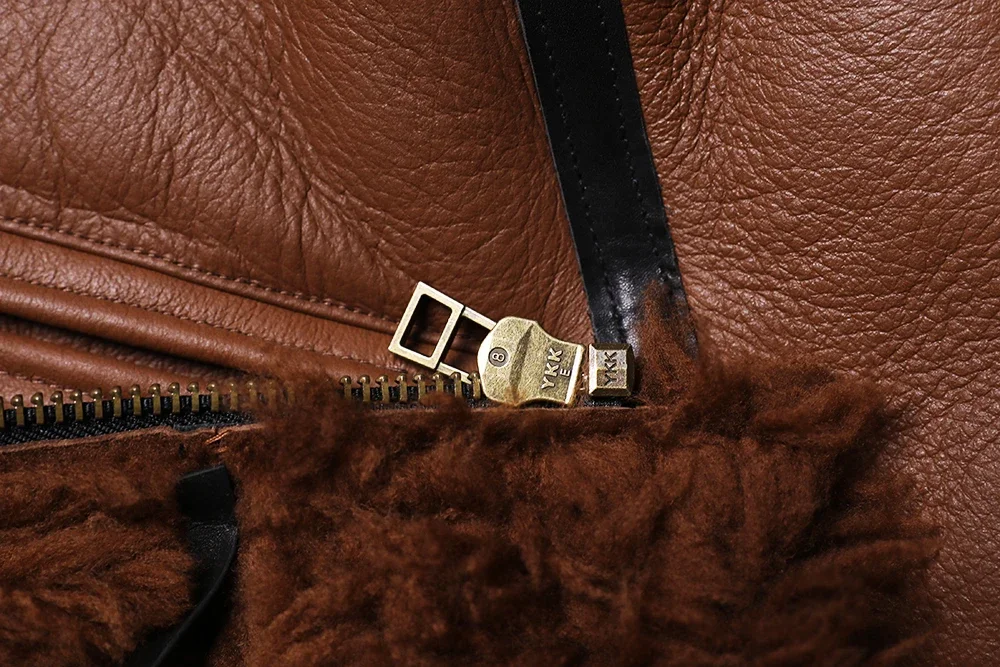
Cold Weather Protection: Wind and Water Resistance
Beyond pure insulation, protection against wind and moisture plays a critical role in cold-weather performance.
Both shearling and sheepskin naturally resist wind penetration thanks to their dense structure. The leather side forms an effective barrier against cutting winds, while the wool component prevents the cold air from reaching your body. However, shearling typically offers superior wind resistance due to its unified construction—there are no seams between the wool and leather where wind might penetrate.
When it comes to water resistance:
- Both materials contain natural lanolin that provides moderate water repellency
- Shearling can retain up to 30% of its own weight in moisture before feeling wet to the touch
- Shearling maintains insulation properties even when damp (about 80% of dry insulation value)
- Sheepskin without wool loses insulating properties more quickly when wet
- Both materials dry relatively slowly compared to synthetics
- Neither should be submerged or exposed to heavy, sustained rainfall
For light snow or brief exposure to moisture, both perform admirably. The natural lanolin content helps water bead off rather than immediately soak in. However, for extended exposure to wet conditions, both materials benefit from additional weather treatment or should be paired with a water-resistant outer shell.
Those exploring warmest men’s coats for extreme cold will find that many premium winter coat options incorporate weather-resistant treatments that enhance the natural properties of these materials.
Breathability and Moisture Management
A key aspect of staying warm in cold weather is managing moisture—both from the environment and from your own body. Both shearling and sheepskin excel in this area, but with some notable differences.
Wool fibers naturally wick moisture away from the body while simultaneously allowing water vapor to escape. This breathability prevents the clammy feeling associated with many synthetic insulators. When you’re active in cold weather, this moisture management becomes essential to preventing post-activity chills.
Shearling generally offers superior breathability because:
- The intact wool fibers maintain their natural structure and wicking properties
- The wool-leather connection creates a more effective moisture transport system
- The natural crimp in the wool allows better air circulation
- The fiber structure allows humidity to escape while trapping warm air
The moisture vapor transmission rate (MVTR) of quality shearling can be up to 40% higher than processed sheepskin where the wool has been removed or altered. This means shearling can move more perspiration away from your body while still maintaining warmth.
For those considering winter wear options, this breathability factor becomes particularly important during activities where exertion levels change, such as urban commuting or outdoor work. Many customers find heavy winter coats with shearling components provide the best balance of warmth and comfort during varied activities.
Comfort Factors Beyond Temperature Regulation
While warmth is the primary concern in cold weather, comfort encompasses more than just temperature regulation.
Shearling typically offers superior tactile comfort because the wool fibers remain intact in their natural state. The wool side is extraordinarily soft against the skin, creating a plush, comfortable feel. The density of wool fibers provides gentle cushioning that many find luxurious during extended wear.
Sheepskin without wool can feel slightly stiffer initially, though it typically softens with wear. When processed as a fleece-lined leather, it still provides excellent comfort but may not match the plushness of intact shearling.
Weight considerations also impact comfort. Shearling offers an exceptional warmth-to-weight ratio, providing significant insulation without feeling bulky or restrictive. This makes it ideal for active cold-weather pursuits where freedom of movement matters.
Both materials conform to the body over time, creating a personalized fit that enhances comfort. However, shearling typically requires less break-in time due to its natural flexibility. For those with sensitive skin, the hypoallergenic properties of wool make shearling a comfortable option even for direct contact with the skin.
The range of leather and shearling coat options available today means finding the right balance of insulation and comfort has never been easier.
Durability and Longevity in Harsh Conditions
Investment in quality cold-weather gear often comes down to longevity—how well will it perform over multiple seasons of harsh conditions?
Quality shearling and sheepskin products both offer exceptional durability compared to synthetic alternatives. With proper care, premium garments in either material can last for decades. However, several factors influence their comparative longevity:
- Shearling’s integrated wool-leather structure typically resists separation better than constructed sheepskin garments
- The natural bond between wool and hide in shearling creates fewer potential failure points
- High-quality tanning processes significantly impact both materials’ lifespan
- Sheepskin without wool may show wear patterns earlier but can be easier to repair
- Both materials resist abrasion better than many synthetic alternatives
Proper care dramatically extends the lifespan of both materials. Regular conditioning of leather coat materials prevents drying and cracking, while appropriate cleaning preserves the wool’s loft and insulating properties.

Practical Applications: Best Uses for Each Material
Understanding the optimal uses for each material helps match your investment to your specific cold-weather needs.
Ideal Applications for Shearling:
– Extreme cold environments (-20°F/-29°C and below)
– Extended outdoor exposure in winter conditions
– High-altitude cold weather activities
– Situations requiring maximum insulation with minimal bulk
– Premium outerwear where both performance and luxury are priorities
Best Uses for Sheepskin:
– Moderate to cold climates (0°F/-18°C and above)
– Versatile wear across multiple seasons
– Urban environments with variable temperatures
– Applications where weight and bulk must be minimized
– Situations where flexibility in styling is important
The question of whether sheepskin and shearling are the same becomes most relevant when matching materials to specific uses. While they share many properties, their performance differences become more pronounced in extreme conditions or specialized applications.
Quality Assessment: What to Look For When Purchasing
Identifying quality in shearling and sheepskin products requires attention to specific details:
For Shearling:
– Even, dense wool with consistent length throughout the garment
– Supple leather side without stiffness or excessive thickness
– Secure bond between wool and leather (no separation or loose patches)
– Clean, reinforced seams with no raw edges exposed
– Rich, even coloration on both the wool and leather sides
– Wool that springs back when compressed rather than remaining flat
For Sheepskin:
– Consistent thickness throughout the hide
– Even coloration and texture across all panels
– Flexible leather that doesn’t crack when bent
– If wool is present, it should be securely attached with no thin spots
– Clean, well-finished edges and seams
– Natural feel without excessive stiffness or artificial coatings
Knowing how to identify genuine shearling and sheepskin products helps avoid synthetic alternatives that may look similar but offer significantly reduced performance in cold conditions.
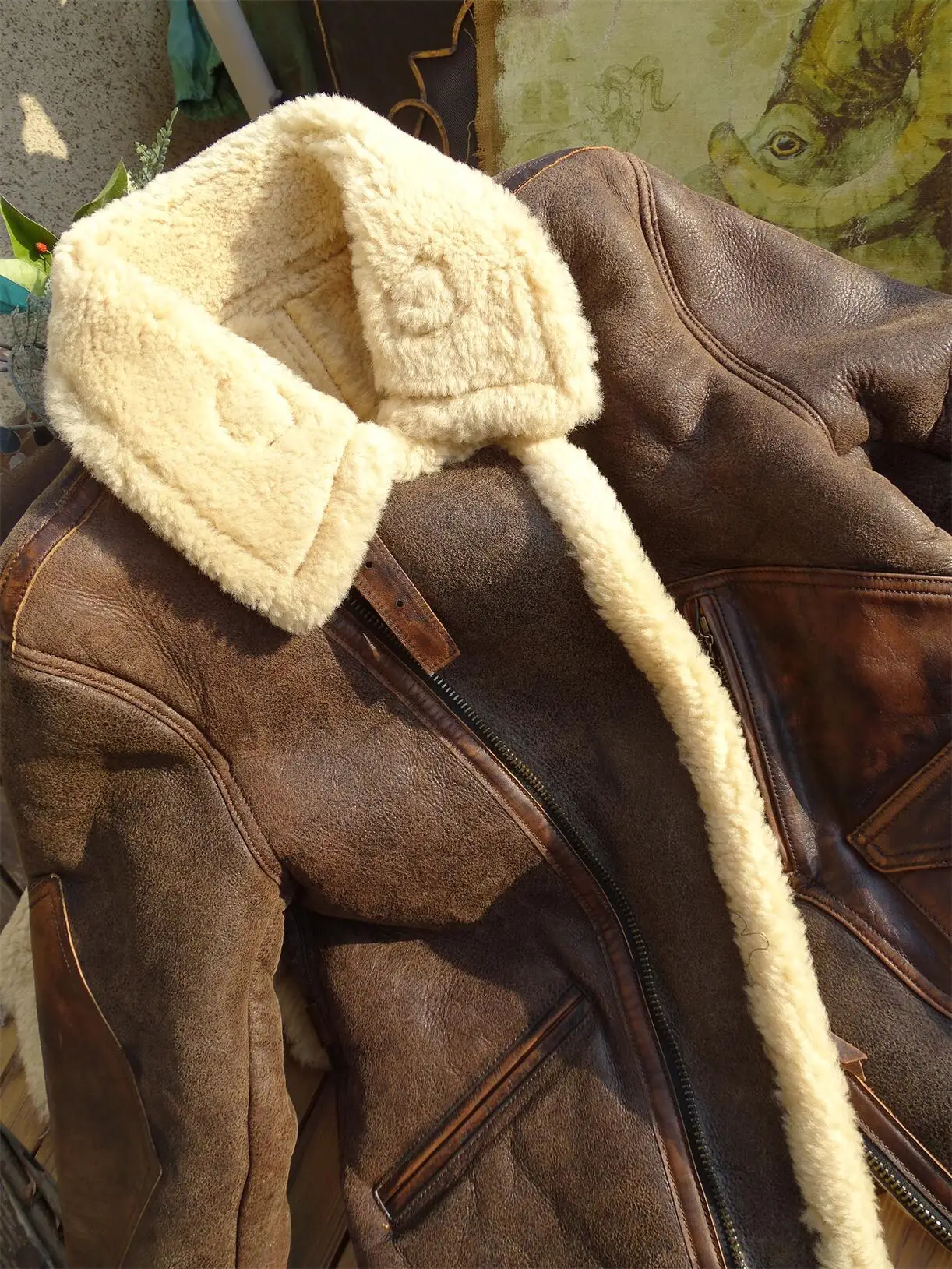
Care and Maintenance for Maximum Longevity and Performance
Proper maintenance ensures your cold-weather investment continues performing season after season:
- Air regularly: Allow your garment to air out after each wear before storing.
- Brush gently: Use a soft-bristled brush to remove surface dirt from wool surfaces.
- Spot clean promptly: Address spills immediately with a damp cloth and mild soap.
- Professional cleaning: For deep cleaning, seek specialists experienced with these materials.
- Proper storage: Store on padded hangers in breathable garment bags away from direct sunlight.
- Conditioning: Apply appropriate leather conditioner to the leather side 1-2 times per year.
- Rain protection: Apply specific sheepskin/shearling water repellent treatments before winter season.
- Drying technique: If wet, allow to dry naturally away from direct heat sources.
Avoid common mistakes like using harsh detergents, machine washing, wringing, or exposing to direct heat sources like radiators when drying. For those with various leather coat options in their wardrobe, establishing a regular maintenance routine preserves both appearance and performance.
Mens Heavy Winter Coat, Mens Insulated Coat, Mens Parka Coat
Price range: $175.52 through $237.36 Select options This product has multiple variants. The options may be chosen on the product pageMens Big and Tall Winter Coats, Mens Down Coat, Mens Hooded Winter Coat, Mens Puffer Coat
Price range: $126.44 through $217.01 Select options This product has multiple variants. The options may be chosen on the product pageMens Big and Tall Winter Coats, Mens Hooded Winter Coat
Price range: $80.32 through $106.68 Select options This product has multiple variants. The options may be chosen on the product pageMens Cashmere Overcoat, Mens Hooded Winter Coat, Mens Wool Blend Coat
Price range: $128.72 through $139.68 Select options This product has multiple variants. The options may be chosen on the product pageMens Hooded Winter Coat, Mens Insulated Coat, Mens Puffer Coat, Mens Quilted Coat
Price range: $139.88 through $177.72 Select options This product has multiple variants. The options may be chosen on the product pageMens Double Breasted Pea Coat, Mens Hooded Winter Coat, Mens Quilted Coat
Price range: $81.00 through $108.48 Select options This product has multiple variants. The options may be chosen on the product page
At-a-Glance Comparison: Shearling vs. Sheepskin
For quick reference, this comparison highlights the key differences between these premium cold-weather materials:
| Attribute | Shearling (1-10) | Sheepskin (1-10) |
|---|---|---|
| Heat Retention | 9.5 | 8.5 |
| Wind Resistance | 9.0 | 8.0 |
| Water Resistance | 7.5 | 6.5 |
| Breathability | 8.5 | 7.5 |
| Comfort | 9.5 | 8.0 |
| Durability | 9.0 | 8.5 |
| Weight (Lightness) | 7.5 | 8.5 |
| Ease of Maintenance | 6.5 | 7.5 |
| Price Value | 8.0 | 8.5 |
| Versatility | 8.0 | 8.5 |
These ratings reflect the general performance characteristics of high-quality examples of each material. Individual garments may vary based on specific processing techniques, quality standards, and construction methods.
Understanding the difference between these materials in the context of luxury outerwear options helps clarify why certain products command premium prices and deliver superior cold-weather performance.
Making Your Decision: Which Material Suits Your Needs
The ideal choice between shearling and sheepskin ultimately depends on your specific needs and priorities:
Consider Shearling If:
– You regularly face extreme cold temperatures
– Maximum insulation is your top priority
– You value plush comfort and luxurious feel
– You’re willing to invest in specialized care
– You prefer investing in a single premium piece
Consider Sheepskin If:
– You need versatility across various weather conditions
– You prioritize lighter weight and flexibility
– You prefer easier maintenance requirements
– You have budget constraints but still want natural materials
– You need a more versatile piece for varied climates
For many consumers, the middle ground includes insulated coat options that combine elements of both materials or incorporate strategic shearling panels in high-performance areas while using processed sheepskin elsewhere.
Metro Cloak specializes in premium outerwear that balances these considerations, offering garments that provide exceptional cold-weather performance without sacrificing style or comfort. By understanding the unique properties of these materials, you can select the option that best meets your specific cold-weather needs and lifestyle requirements.

